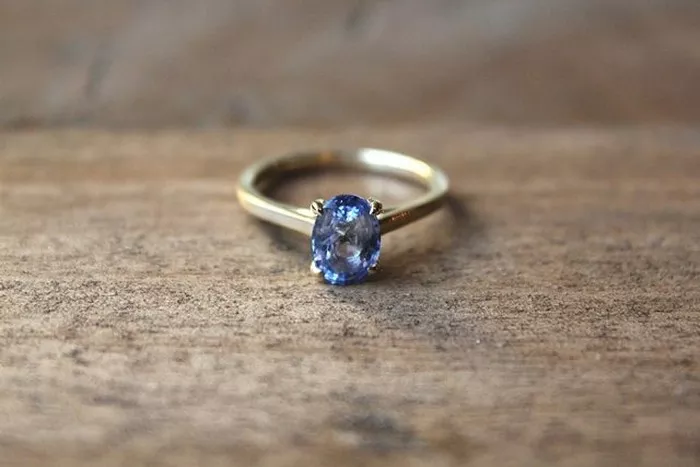The world of gemstones is a fascinating and intricate one, with each gem having its own unique characteristics, history, and value. Among the myriad of gemstones, Kashmiri yellow sapphires stand out for their exceptional quality, rarity, and historical significance. This article aims to provide a comprehensive analysis of the value of the Kashmiri yellow sapphire collection, exploring its origins, characteristics, market dynamics, and factors that influence its pricing.
Origins and Characteristics of Kashmiri Yellow Sapphire
Sapphire, a member of the corundum family, is renowned for its hardness and durability. The mineral corundum occurs naturally in a variety of colors, with blue being the most common and widely recognized. However, yellow sapphires are equally stunning, exhibiting a warm and inviting hue that ranges from light lemon yellow to deep, vibrant orange-yellow.
Kashmir, a region nestled in the Himalayas, has a rich history of gemstone mining. While Kashmir is best known for its emeralds, the region has also produced high-quality sapphires, including yellow sapphires. The unique geological conditions in Kashmir contribute to the production of gemstones with exceptional clarity, color saturation, and brilliance.
Kashmiri yellow sapphires are distinguished by their vivid colors, often described as “honey-like” or “buttery.” These gemstones typically have a high degree of transparency, with minimal inclusions or flaws. The color of Kashmiri yellow sapphires is primarily due to the presence of trace elements such as iron and titanium within the mineral structure.
Market Dynamics and Pricing Factors
The value of Kashmiri yellow sapphires is influenced by a variety of factors, including rarity, quality, demand, and supply. Here’s a closer look at each of these factors:
Rarity
Kashmiri yellow sapphires are considered rare due to the limited number of mines in Kashmir and the specific geological conditions required to produce these gemstones. As a result, they are highly sought-after by collectors and investors.
The rarity of Kashmiri yellow sapphires is further compounded by the fact that many of the mines in Kashmir have been exhausted or closed due to environmental and safety concerns. This has reduced the supply of new gemstones entering the market.
Quality
The quality of a Kashmiri yellow sapphire is determined by several factors, including color saturation, clarity, cut, and carat weight. Gemstones with deeper, more vivid colors and higher clarity grades tend to be more valuable.
The cut of the gemstone also plays a crucial role in determining its value. A well-cut sapphire will exhibit excellent brilliance and sparkle, enhancing its overall appearance and desirability.
Demand
The demand for Kashmiri yellow sapphires is driven by a combination of factors, including fashion trends, cultural significance, and investment potential. As fashion trends evolve, gemstones with certain colors or styles may become more popular, driving up demand and prices.
Kashmiri yellow sapphires are also highly valued in many cultures, particularly in India, where they are believed to possess mystical and healing properties. This cultural significance contributes to their demand and value.
Supply
The supply of Kashmiri yellow sapphires is limited due to the depletion of mines and the challenges associated with mining in the Himalayas. This limited supply, combined with high demand, has led to a steady increase in prices over the years.
The supply of new gemstones entering the market is also affected by the time and effort required to mine, cut, and polish sapphires. This labor-intensive process contributes to the overall cost of producing a finished gemstone.
Factors Affecting Pricing
In addition to the factors mentioned above, several other factors can affect the pricing of Kashmiri yellow sapphires:
Certification
Gemstones that have been certified by reputable gemological laboratories tend to have higher values. Certification provides assurance of the gemstone’s authenticity, quality, and origin, which can be critical for investors and collectors.
Laboratories such as the Gemological Institute of America (GIA) and the American Gem Society (AGS) are recognized globally for their expertise in gemstone identification and grading.
Origin
The origin of a Kashmiri yellow sapphire can also affect its value. Gemstones from well-known mines or regions may have higher values due to their historical significance or reputation for producing high-quality gemstones.
Kashmiri sapphires, in particular, have a long history of producing exceptional gemstones, which has contributed to their reputation and value in the market.
Treatment
Some Kashmiri yellow sapphires may have undergone treatments to improve their color or clarity. While treatments are common in the gemstone industry, they can affect the value of a gemstone.
Gemstones that have been heated or treated with chemicals to enhance their appearance may have lower values than untreated gemstones of similar quality.
Economic Conditions
The economic conditions in the region where the gemstones are mined can also affect their pricing. Political instability, natural disasters, or economic downturns can disrupt the supply chain, leading to fluctuations in prices.
Similarly, global economic conditions can affect the demand for luxury items like gemstones. During periods of economic uncertainty, consumers may be more hesitant to purchase high-end jewelry, which can affect prices.
Conclusion
In conclusion, the Kashmiri yellow sapphire collection is a treasure trove of exceptional gemstones that combine rarity, quality, and cultural significance. The value of these gemstones is influenced by a variety of factors, including rarity, quality, demand, supply, certification, origin, treatment, and economic conditions.
Related topic:
- Can Blue Sapphire and Yellow Sapphire Be Worn Together?
- Can Yellow Sapphire Be Worn in a Silver Ring?
- Can You Wear Amethyst and Yellow Sapphire Together?


